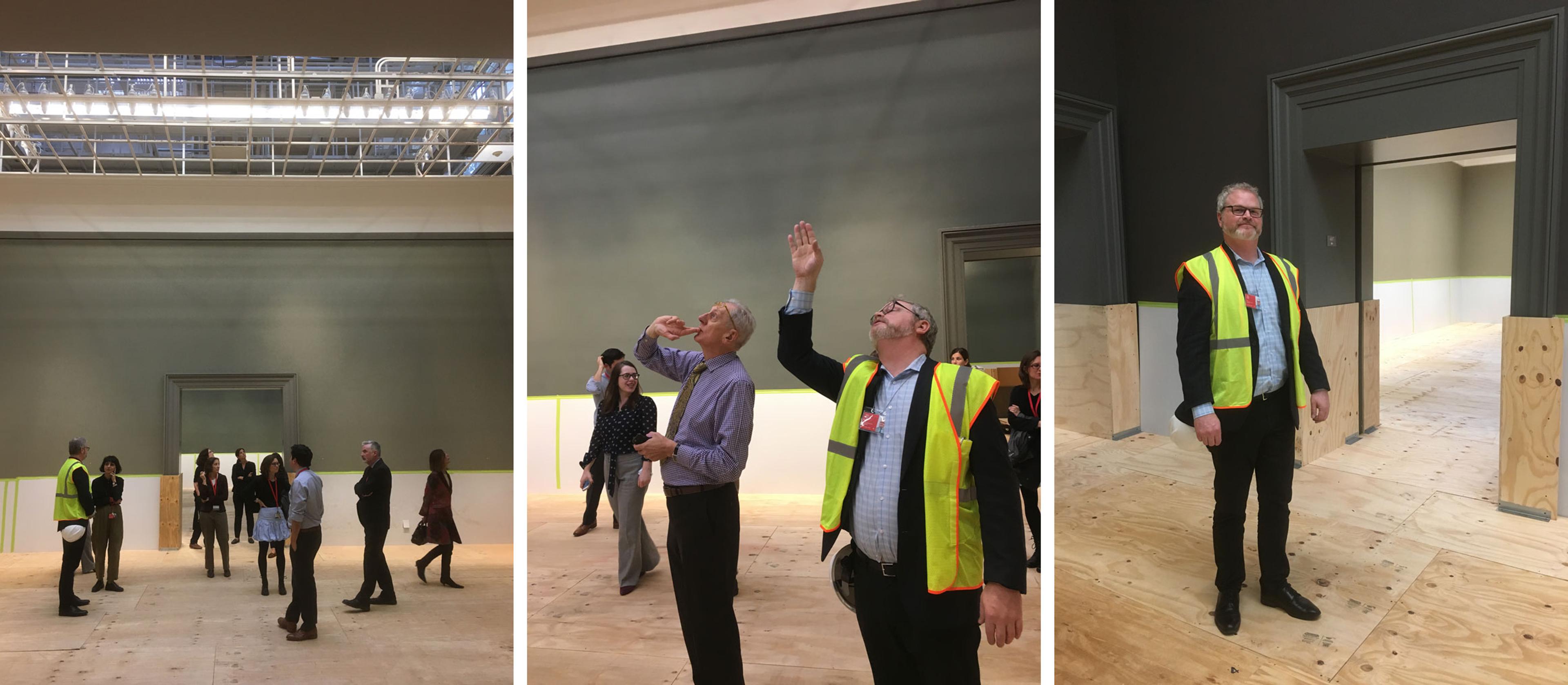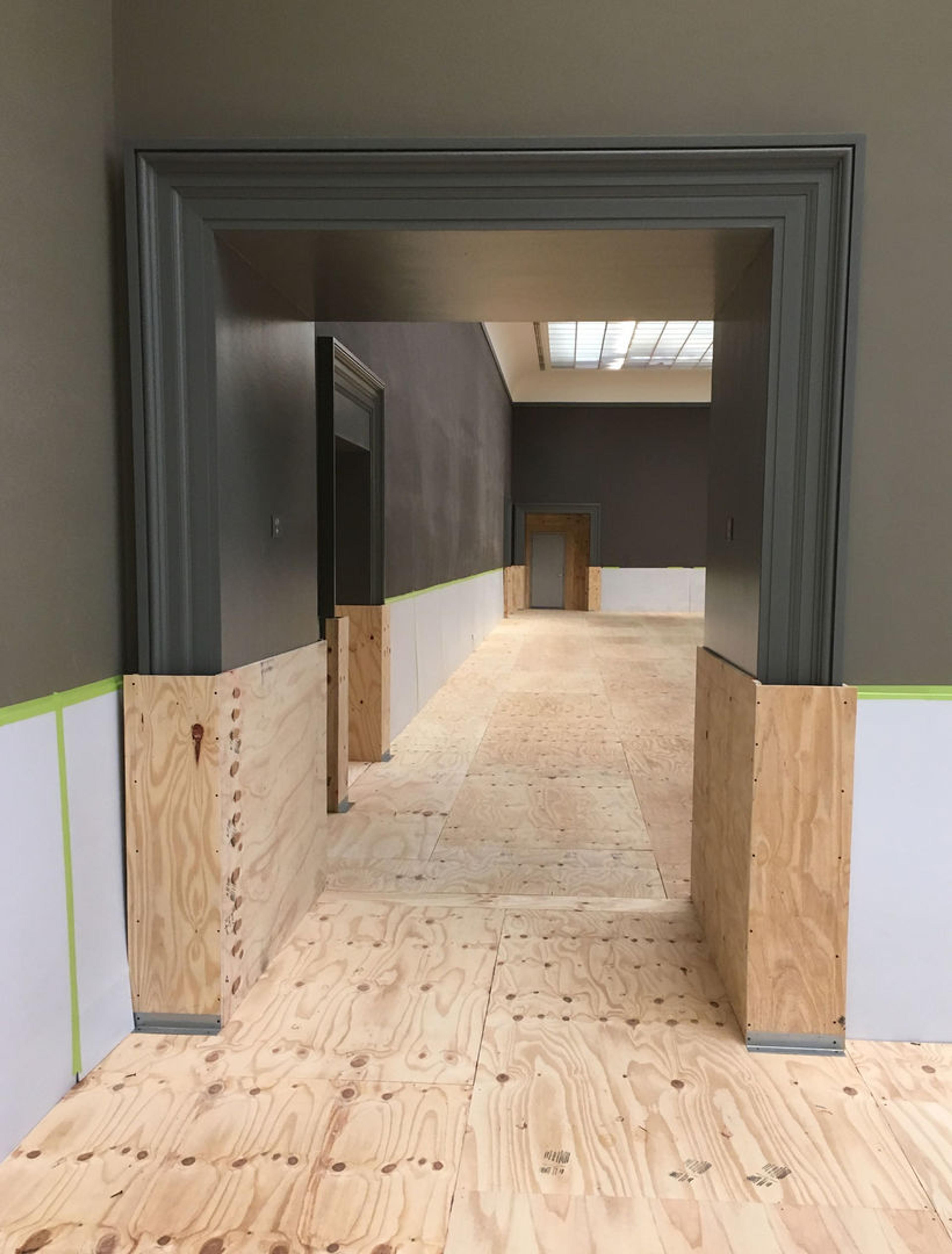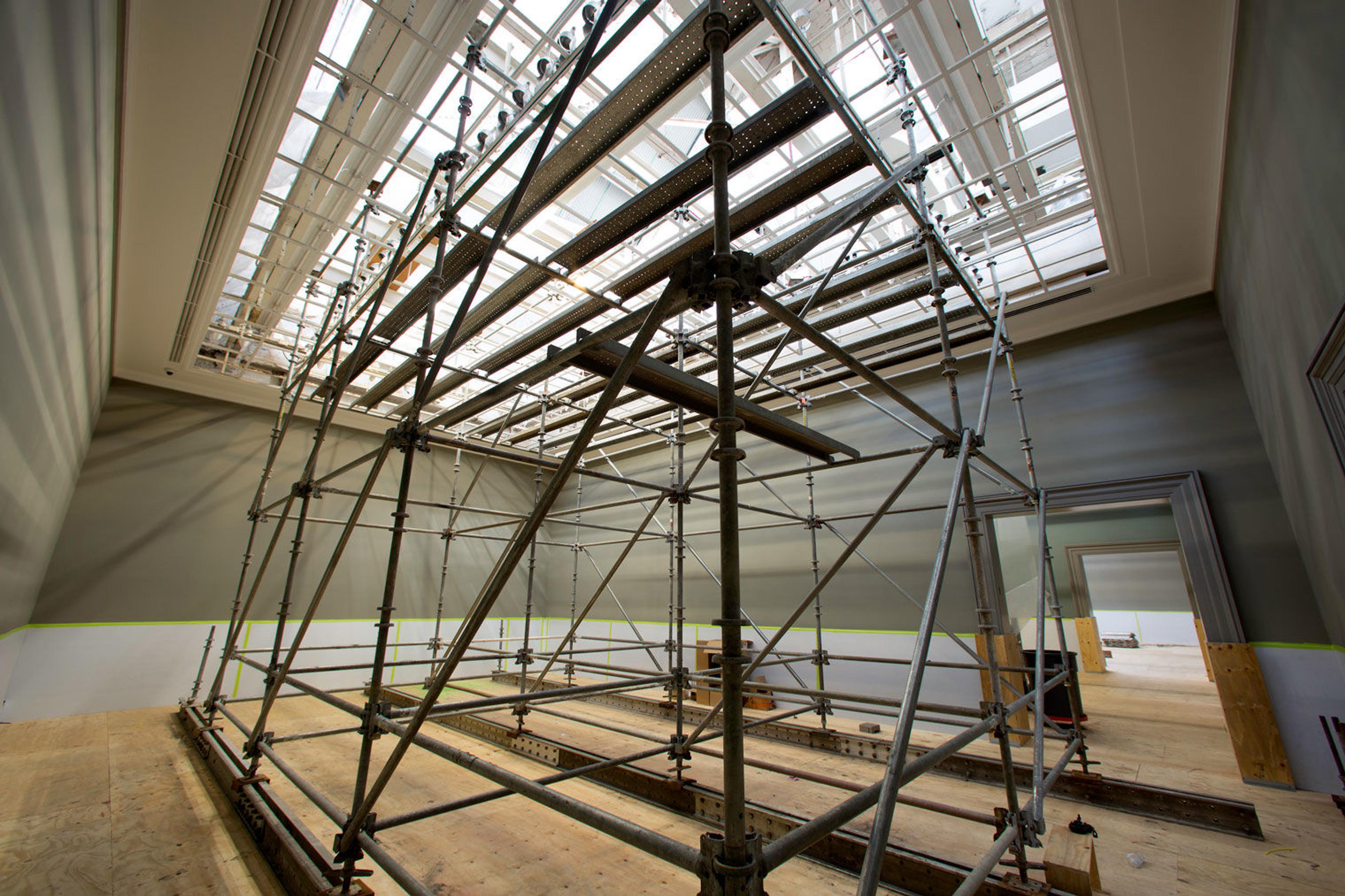
A view up through the grid normally filled with a light-dispersing glass into the lighting system above the European Paintings galleries
Last summer we were incredibly busy moving highlights of the Old Master collection into the suite of galleries that will remain open during the first phase of work replacing the skylights—a massive undertaking. We have mixed and matched pictures to tell different stories, and have moved parts of the collection to the Robert Lehman Wing, where The Met's remarkable collection of paintings by El Greco—the finest outside Spain—can be seen in one of the permanent galleries of the Lehman Collection (gallery 958) while our world-famous Dutch paintings are installed as an exhibition in the lower suite of galleries. The project has truly been a labor of love.
As a result, twenty-seven galleries have been cleared so that a new lighting system can be installed—one that will allow a more even distribution of natural light, which is the prerequisite for optimal viewing of paintings. The hardwood floors have been protected and the glass ceilings removed, exposing the system of lighting that we are replacing, which was considered state of the art in 1952.
We in the Department of European Paintings recently got our first tour of the galleries since their closing. What a sight to realize how much goes into getting natural light into the galleries!

Staff from the Department of European Paintings staff tour the empty galleries with Michael Dominick, senior associate buildings manager for infrastructure (right)
The image at the top of this page is a view up through the grid that is normally filled with a special glass to disperse the light. Above it is an enormous space with what resembles a greenhouse with adjustable louvers, which will enable the quantity and quality of natural light entering the galleries to be modified according to the seasonal changes. For artificial light sources, we have found the combination of fluorescent and LED lights to be a good mix for viewing the paintings.
It's a complex system to say the least, and we are so grateful that the person overseeing this massive effort is Michael Dominick, The Met's senior associate buildings manager for infrastructure (above right). He'll be contributing his perspective to this blog series and giving updates on the project as we move along through the next four years. (Michael is also a committed artist who works with molten iron: check out his website!)
Below, enjoy photos of some of our empty galleries—a rare sight in this Museum!





Related Content
View the web feature Met Masterpieces in a New Light for more information about the Skylights Project and explore ways to engage with the Department of European Paintings' collection online.
Read more articles in this blog series.
